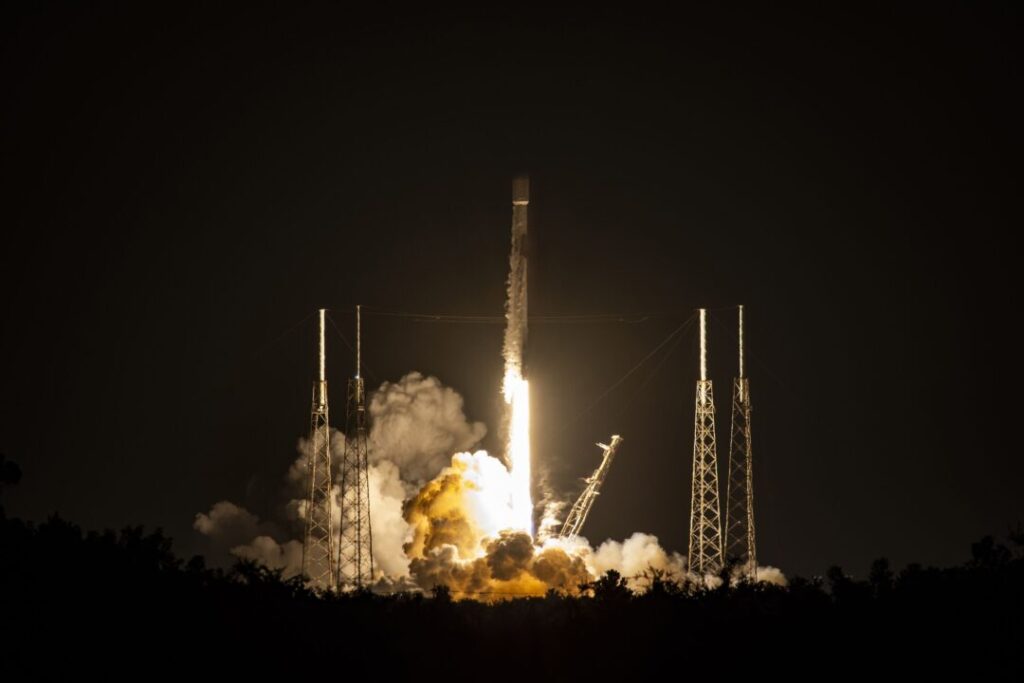An article that was removed from its online version shortly after being published in China highlights Beijing’s growing concerns about SpaceX’s rapidly expanding satellite network, Starlink. So, why is China uneasy about Starlink?
The first institution to express concerns about the Starlink satellite network was the European Southern Observatory (ESO), which stated that the satellites would seriously interfere with wide-area observation telescopes. ESO’s 2020 announcement contradicted SpaceX owner Elon Musk’s claims that Starlink satellites would have “zero impact on astronomy.” Despite SpaceX requesting a meeting with ESO on this matter, no “astronomical update” has been made to the Starlink project over the past two years.
Recently, an article published in China has drawn attention to concerns regarding Starlink satellites. The article, written by Ren Yuanzhen from the Beijing Institute of Tracking and Telecommunications, was published in China’s Modern Defense Technology magazine. Interestingly, the article was removed from online platforms after being reported by The South China Morning Post. However, before its removal, the article titled “Starlink’s Development Status and Countermeasures” was translated into English by US diplomat David Cowhig.
The article suggests that China should use a combination of “soft and hard kill methods” to disable some of the Starlink satellites and destroy the satellite network’s operating system.
What is the Starlink Satellite Network?
Representing SpaceX’s satellite internet network, Starlink aims to provide low-cost internet access to remote areas away from main residential areas. It is the largest-scale project of satellite services offering internet from low Earth orbit, with 2,146 satellites launched so far. SpaceX’s goal is to launch 12,000 more satellites within the next five years, ultimately reaching 42,000 satellites.
Unlike existing satellite internet services, which are mostly in geostationary orbit at 35,000 kilometres above the Earth, SpaceX’s satellites are only 550 kilometres away, allowing for faster signal transmission.
Although satellite internet service is slower than traditional broadband, it can easily provide internet to areas without cable networks or antenna towers.

SpaceX Starlink launch in July 2023 (SpaceX/X)
Why is China Concerned About Starlink?
One of the concerns of Chinese scientists is that Starlink could significantly enhance data communication speeds for US military vehicles, including fighter jets.
While it is unknown what methods could be used to disable Starlink, the South China Morning Post article suggests that the approach should be “low-budget and highly effective.” It also notes that not just individual satellites but the entire network poses a problem.
At this point, China’s use of missiles to destroy thousands of small satellites seems quite far from the proposed approach. It’s important to note that China has had the capability to hit satellites in orbit for years. Wikileaks documents revealed that both the US and China used missiles to destroy their satellites to intimidate each other.
The failure of missiles suggests that China could target Starlink using lasers, microwave technology, or even cube satellites. SpaceX has not responded to Newsweek’s request for comment on the matter.
Roscosmos is Also Concerned
In addition to its commercial service, Starlink can also enhance the US military’s data communication capacity. The future deployment of tens of thousands of satellites to provide services to the US military has led to political tension between the US and its rivals.
Dmitry Rogozin, head of Russia’s national space agency Roscosmos, made a threatening statement earlier this month, claiming that Starlink was being used to aid Ukrainian military units. Musk, in a Twitter post, translated Rogozin’s message and noted that he was “being held accountable as an adult” for providing communication equipment to Ukraine.
Has Ukraine Benefited from Starlink?
Alongside the article suggesting measures against Starlink, another article was published on China Military Online, the news portal representing the Chinese army.
Written by Li Xiaoli, the article stated that Starlink’s “uncontrolled expansion” and SpaceX’s ambition to use Starlink for “military purposes” should be considered internationally.
According to Xiaoli, Starlink satellites are being used to help Ukraine in the war against Russia. It is known that over 10,000 Starlink terminals were delivered to Ukraine with the support of the US government. Besides strengthening communication via Starlink, it was suggested that technologies such as drones, big data, and facial recognition could be used to assist Ukraine.
The article argued that SpaceX would face increasing political and diplomatic risks due to Starlink’s high budget and questionable demand.
Xiaoli’s claims are not unfounded. According to The Times, Ukrainian military units communicated intelligence gathered from drones connected to Starlink terminals to artillery units.
Another report by Reuters indicated that the Ukrainian Ministry of Defense is using US-based Clearview AI facial recognition technology at checkpoints. This technology is also used to identify unmasked Russian soldiers, prevent information manipulation, and identify the deceased. It is unclear whether the AI technology is used in conjunction with Starlink.
“Strong Military Background”
According to Xiaoli, the US Air Force has been conducting tests with Starlink since 2018 to provide low-latency, high-bandwidth internet to its aircraft.
Space News said SpaceX received $150 million in funding from the US military in 2020 to develop military satellites. In return, Starlink satellites were granted access to transmit broadband data over military networks.
Xiaoli stated that when satellites work in conjunction, they can provide surveillance, navigation, and meteorological information for the US military, as well as enhance military power through remote intelligence gathering, communication networks, navigation, positioning, attack, and conflict, and space defense.
Reigniting debates, the article by Yuanzhen mentioned that Starlink’s 2017 patent application aimed to implement satellite communication and transmission, satellite imaging, remote surveillance, and other services. These applications are believed to support war intelligence and other military services.
“Global Network”
Another significant factor increasing China’s discomfort is that Starlink satellites will cover a wide area in low Earth orbit. According to Xiaoli, if Starlink reaches its target of 42,000 satellites, it will control 80% of the satellite capacity in low Earth orbit.
Last year, China stated at the United Nations (UN) General Assembly Committee on the Peaceful Uses of Outer Space that its space station had to manoeuvre on July 1 and October 21 to avoid collision with Starlink satellites.
The Latest Breakthrough: Brazil
The most recent development in the Starlink project was the agreement signed between SpaceX and the Brazilian government. Under the agreement, Starlink will be used to provide internet access to remote areas in the Amazon rainforest.
Musk stated on Twitter that Starlink would allow 19,000 schools in the Amazon, which are isolated from the internet, to connect to the world.
Although connecting the Amazon to the internet seems beneficial, Brazil’s right-wing president opened the rainforest to development projects initiated in 2019. Over the past years, the rainforest has been exploited for agricultural land, logging, and mining operations.
By the end of 2021, the deforestation rate in the Amazon reached its highest level in the past 15 years, with a 22% increase annually. Satellite images obtained in January 2022 showed that approximately 430 square kilometres of forest area were destroyed in one year, five times the amount of the previous year.
Additionally, increasing lithium wars between China and the US could further damage Brazil’s natural cover. As competition for lithium production, a key material for electric vehicle batteries, intensifies, China controls many mines, especially in Africa. Ironically, China represents one of the largest markets for Tesla, which has a massive factory in Shanghai. Last year, Tesla announced plans to use lithium iron phosphate batteries for its next-generation electric vehicles.
This article is from 2022. To read the original Turkish article, click here.
Main image: SpaceX/X
Sources: The Independent/Newsweek/TheQuint


